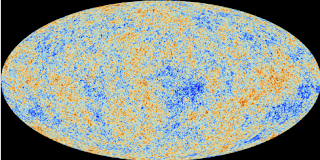Comet C/2022: An Icy Visitor
A comet lost to time for 50,000 years is soon to pass by Earth (For a bit of context, we were still hunter-gatherers then), It can be seen with the naked eye(subject to pleasant weather for us here in Mohali :”)). The C/2022 E3 (ZTF) comet is sailing through the inner solar system and will soon make its closest approach. With a minimum predicted magnitude of ∽8, C/2022 E3 is expected to be one of the brightest comets in recent history. From the scientific perspective, it is going to give us the opportunity to observe the icy remnant of early solar system.
What’s in the name?
The name of the comets holds necessary information regarding the discovery.
C- used for a non-periodic comet (more than 200 years to orbit the sun)
2022- discovery year.
E3- shows it was the third comet discovered in the fifth half-month (F is the other half-month of march).
ZTF- Zwicky Transient Facility, the observatory at which it was discovered.
A Short Overview of Comets:
An icy body that outgasses (warming up and releasing gasses) when it passes close to Sun.
They usually have highly eccentric elliptical orbits.
They are different from Asteroids by the presence of a gravitationally unbound atmosphere surrounding their central nucleus(a few hundred meters to tens of kilometres)
Its atmo∽sphere has 2 parts, the Coma and the tail. The Coma is the part immediately surrounding the nucleus, and the Tail consists of the gas blown out of the coma.
The Reason for its Colour:
The comet has a bright green glow around its nucleus. The reason can be attributed to the presence of Diatomic Carbon (C_2) in the head of the comet. When Sun's UV excites C2, Its triplet state radiates at 512nm.
Some Interesting Graphs:
Fig- Distance from Earth(in AU) as a function of time
Fig: Predicted light curve of the comet. After it makes its closest approach to the sun its apparent magnitude will be 7 and 8 making it easily visible through the naked eye.
Visualising Its Orbit:
| Fig - Orbit of C/2023 E3 (ZTF) in background of the solar system |
The Apparent Path of the Comet on Feb 1 from Mohali, India:
References:
https://stellarium-web.org/
- Tarang (MS21135)


.png)


Comments
Post a Comment